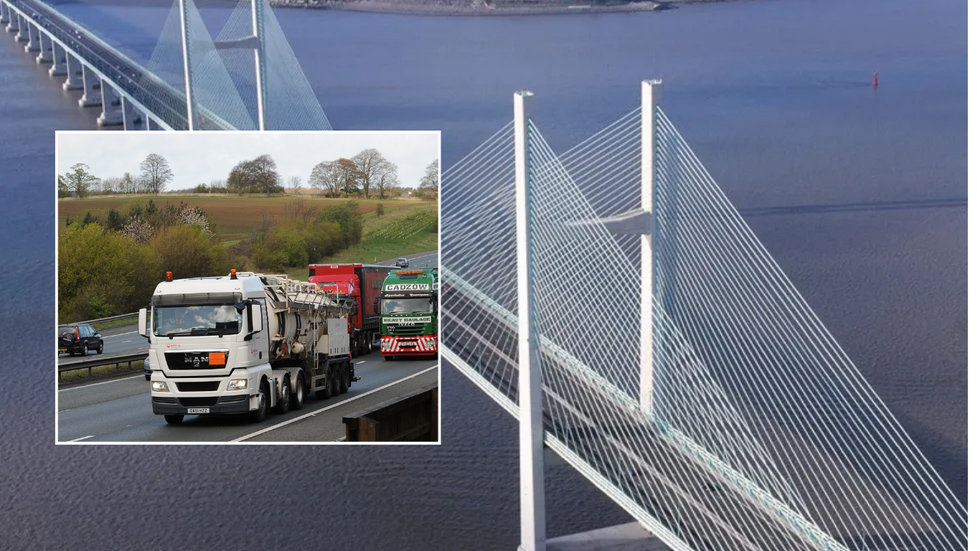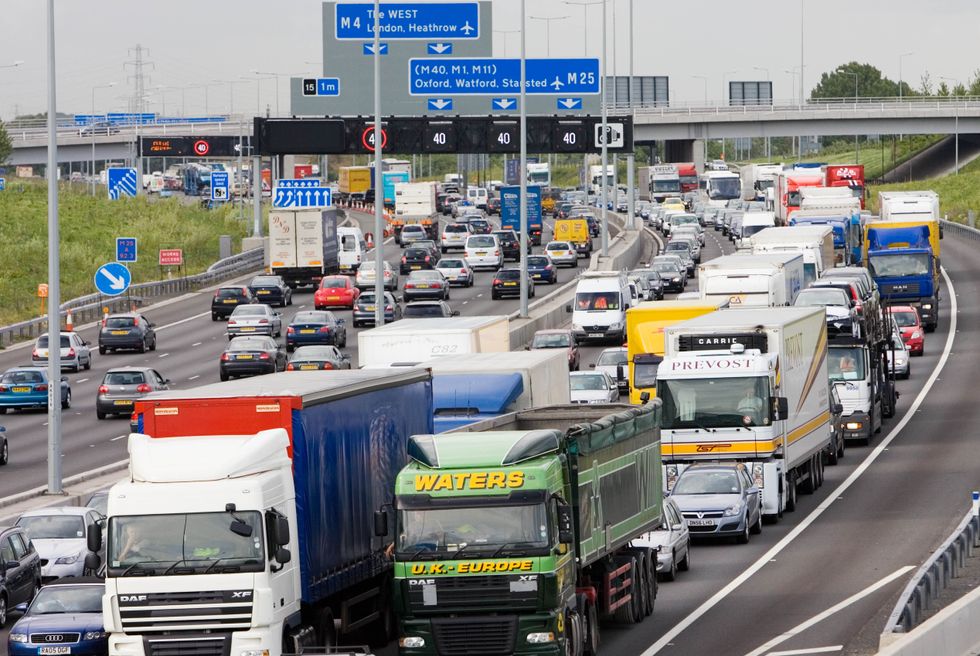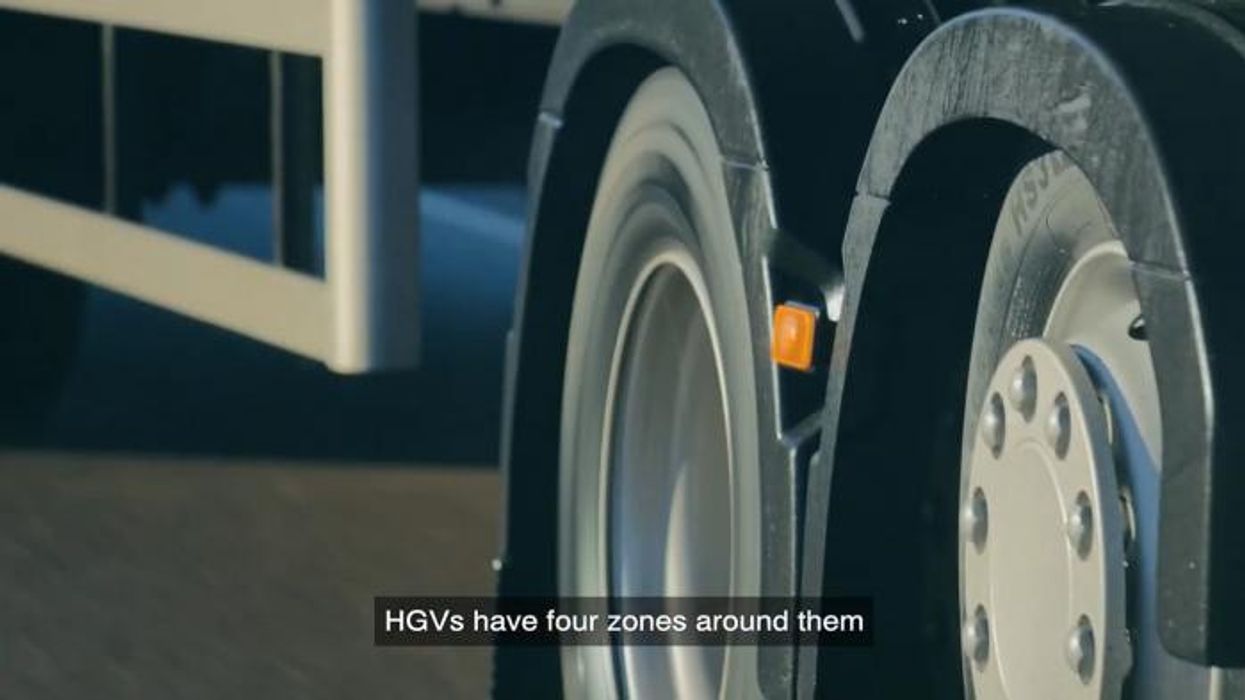New weight restrictions come into effect today impacting thousands of vehicles

HGVs weighing over 7.5 tonnes will be banned from using the M48 Severn Crossing
Don't Miss
Most Read
Thousands of HGV drivers have been warned they will face disruptions from today as new weight restrictions come into force, impacting travel between England and Wales.
From today, only HGVs up to 7.5 tonnes will be permitted to use the M48 Severn Crossing bridge following safety inspections, which found an urgent need to address the number of vehicles using the popular route.
Heavier vehicles must now use the Prince of Wales bridge instead after National Highways implemented the measure to "future-proof" the bridge and reduce the load on its cables.
The restrictions are expected to remain in place for 12 to 18 months, with thousands of HGVs being diverted onto new routes.
Do you have a story you'd like to share? Get in touch by emailing motoring@gbnews.uk
 The restrictions will be in place for at least 12 months | PA/NATIONAL HIGHWAYS
The restrictions will be in place for at least 12 months | PA/NATIONAL HIGHWAYSThe restrictions come after reports found that the M48 Severn Bridge, which opened nearly 60 years ago, was not designed to accommodate today's traffic levels or vehicle weights.
Since the removal of tolls in 2018, traffic has increased by 34 per cent, placing substantial additional weight on the structure, the agency warned.
The size and weight of HGVs have also increased significantly over the decades, with some vehicles rising from 22 tonnes to 44 tonnes due to evolving transport demands.
Under the new measures, National Highways will allow two lanes on the bridge to remain open to all other vehicles while ensuring safety and reducing the load on the cables.
Chris Pope, Programme Delivery Manager for National Highways, said: "Safety is our number one priority, and this weight restriction is about future-proofing the bridge for years to come.
"While the bridge remains safe, it was not designed and built for today's levels or weight of traffic.
"Vehicles have become heavier, and traffic levels have increased significantly over the last 60 years, putting greater load on the cables. As with all our structures, we will continue to monitor the bridge and ensure it remains safe for users."
The M48 Severn Bridge carried approximately 32,000 vehicles daily in 2024, with 3,270 of these being heavy goods vehicles over 7.5 tonnes.
This means around 10 per cent of traffic will be diverted via the M4 Prince of Wales Bridge once the restrictions are in place.
LATEST DEVELOPMENTS:
- Popular car functions in petrol and diesel vehicles at risk of 'extinction' amid rise in electric cars
- E-bike riders and cyclists face £400 fines and criminal conviction for breaking traffic rules - 'No excuse'
- Chinese vehicles threaten to dominate UK sales as drivers back cheaper foreign cars - 'More to come'
 The new weight restrictions will push thousands of HGVs on detoured routes | GETTY
The new weight restrictions will push thousands of HGVs on detoured routes | GETTYThe structure has faced harsh weather conditions throughout its lifetime, contributing to growing concerns about corrosion and whether the bridge can continue at its current level.
In 2022, National Highways conducted an assessment of the bridge's main cables, followed by further laboratory testing, which revealed that the main cables were deteriorating and not as strong as they should be.
Due to these findings, experts recommended that National Highways reduce the load on the bridge to minimise further damage.
Pope added: "We'd like to thank drivers for their support and must stress that only heavy goods vehicles up to 7.5 tonnes in weight should use the bridge.
"Continued use of the bridge by heavy goods vehicles could ultimately see it closed to all traffic. We are acting now to prevent this from happening."
 The ban for HGVs will be in place for between 12 and 18 months | NATIONAL HIGHWAYS
The ban for HGVs will be in place for between 12 and 18 months | NATIONAL HIGHWAYSThe M48 Severn Bridge will remain accessible to all emergency vehicles, scheduled buses, coaches, gritters and recovery vehicles despite the new weight restrictions.
If an unplanned closure of the Prince of Wales bridge occurs, HGVs over 7.5 tonnes will need to follow the official diversion route via the M5 and the M50.











